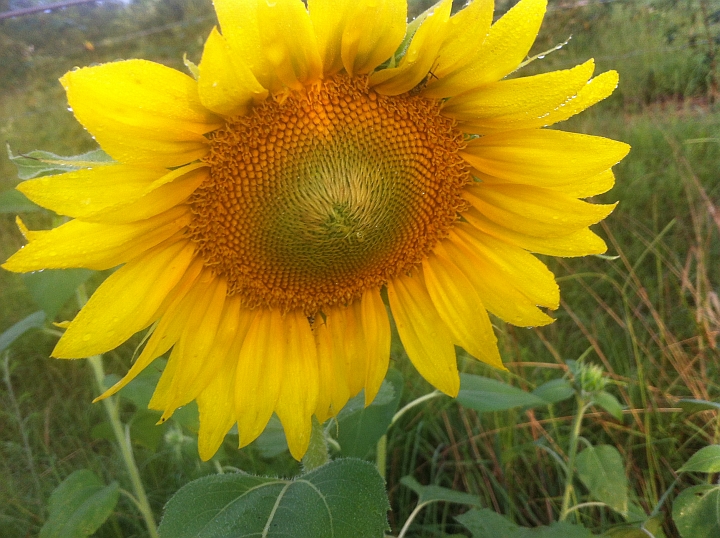Happy Solstice, everyone! Summer is beginning, and summer is the season of nightshades. Tomatoes, peppers, eggplant and potatoes are all in the nightshade family. We will be seeing lots of fruits and veggies in this plant family over the coming weeks and months.
Small Shares
- Eggplant
- Yellow Squash
- Zucchini
- Carrots
- Fingerling Potatoes*
- Cherry Tomatoes
- Green Bell Pepper
Full Shares
- Yellow Squash
- Zucchini
- Carrots
- Fingerling Potatoes*
- Cherry Tomatoes
- Green Bell Pepper
*Bitter potatoes? Fingerling potatoes in particular can have a bitter, somewhat metallic taste in their skins. Some people notice it and some people don’t. The super thin skins slip off easily once the potatoes are cooked. If you find that the skins taste unpleasant, just remove the skins and enjoy your taters naked.
The bottom to the to-do list is where projects go to die.
Important, but not urgent. Those are the tasks that always sink down to the bottom of the to-do list. With 100 CSA shares to harvest for and pack each week plus two farmers markets and the occasional wholesale order, there is plenty to do that must be done now, NOW, NOW! Tomatoes, berries and squash need to be picked every other day. It is a lot to keep up with. But this week we managed to get some important-but-not-urgent tasks accomplished, including seeding the summer cover crop
Sowing the Cover Crop
This mix of legumes and sunflowers will grow in the sections of the field that we are not growing crops on this year. Each year, we grow crops on about 2/3 of the vegetable garden area, and cover crops on about 1/3. The cover crops are not intended to be harvested. Instead, everything that grows will get tilled back into the ground. We wait until a good bit of rain is in the forecast. Then we use the tractor and the disk harrow to kill weeds and prepare the soil for planting. To actually spread the seeds, I use an over the shoulder seed bag with a crank handle that flings the seeds out as I walk back and forth. Finally, we disk the field again to lightly cover the seeds. Then we cross our fingers and hope it rains.
Organic Matter: the holy grail of sustainable farming
Why do we grow cover crops? The most important reason that we grow cover crops is to increase the organic matter in the soil. Organic matter is the holy grail of sustainable farming. Organic matter is made up of partially decomposed plants and animals (think bacteria, bugs, etc.). This decomposing material results in humic acid. Humic acid binds to plant roots and helps the plants receive water and nutrients.
Soils that are high in organic matter hold water in reserve when the plants need it, but help excess water drain off when it is too wet. These soils also help nutrients become available to plants even if the pH isn’t just right. Soils high in organic matter have good texture (tilth) that allows plant roots to penetrate, and have plenty of pockets for air and water (yes, plant roots need air!).
Organic matter means carbon. Plants pull carbon out of the air to make carbohydrates, when the plants break down and decompose much of that carbon is released back into the atmosphere but some of it stays in the soil. This is carbon sequestration. Agricultural practices and climate change – sounds like a topic for another newsletter.
The subterranean marketplace
Cover crops feed the soil food web. What is going on above ground is less than half the picture. The real show is down in the soil. Plants make sugar. Fungi mine nutrients. It’s a subterranean marketplace of plants and fungi trading resources. If you want to hear about the incredible relationships between trees and underground networks of fungi check out this episode of Radiolab (Yes, you really do. Do it for me. As a personal favor.) Plant roots are the mega cities of soil life. It is bustling down there, and a healthy soil community means plants that are more resilient when harmful organisms show up.
We plant legumes because they have a symbiotic relationship with bacteria that can grab nitrogen out of the atmosphere (again, we are talking about the air in those soil pockets). When those bacteria ultimately die, the nitrogen becomes available to the plants. Nitrogen is the most important plant nutrient. But plants themselves can’t use the nitrogen in the air. In sustainable farming, converting the nitrogen in the air into a usable form for plants is what bacteria does. In conventional, farming this is done through the energy intensive, high pressure (150-250 atmospheres) and high temperature (750-930 F) Haber-Bosch process using hydrogen from methane gas and atmospheric nitrogen. The bacteria, they are just doing it all chill in the soil. Yay, bacteria!
Sunflowers are pretty
Besides feeding the soil food web and building soil organic matter, cover crops have lots of “fringe benefits” as well. Notably, cover crops interrupt weed, insect pest and disease cycles. There will be more things blooming for the bees. And let us not forget that sunflowers, in addition to having deep tap roots that mine for soil nutrients, are also pretty.
Clearly, cover crops are very important. Now that I have written this newsletter, I am even more glad that we managed to get the cover crop seeded before the rain.




You must be logged in to post a comment.